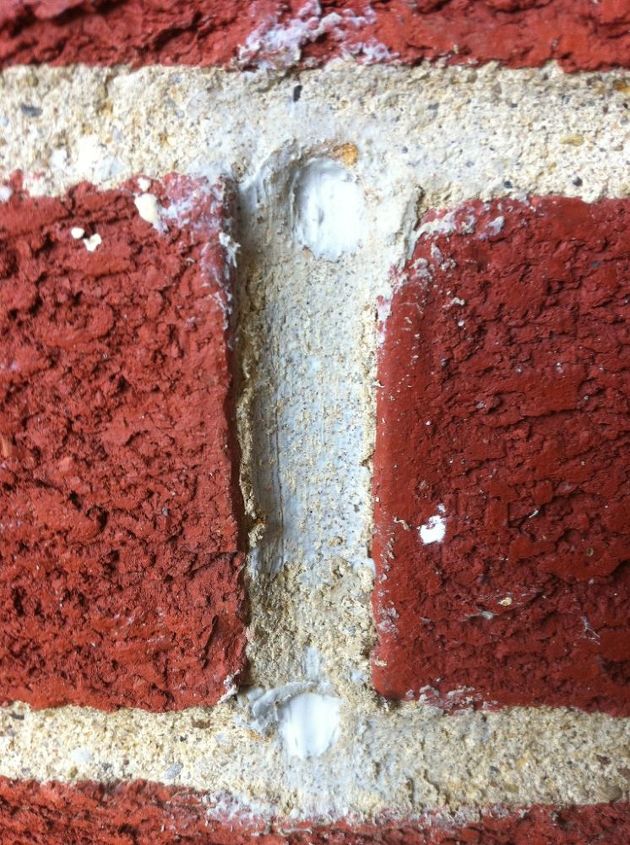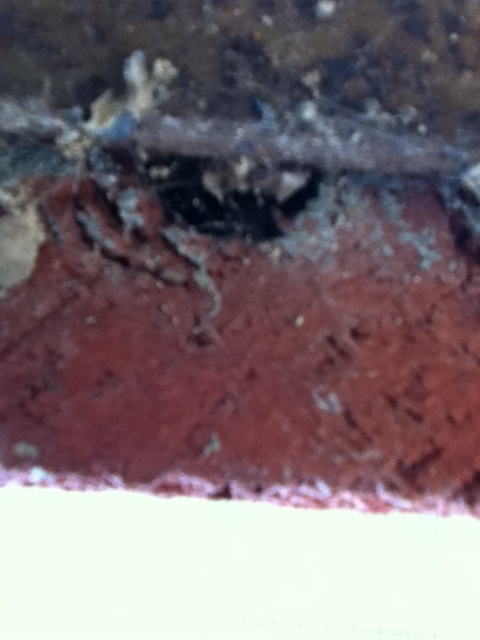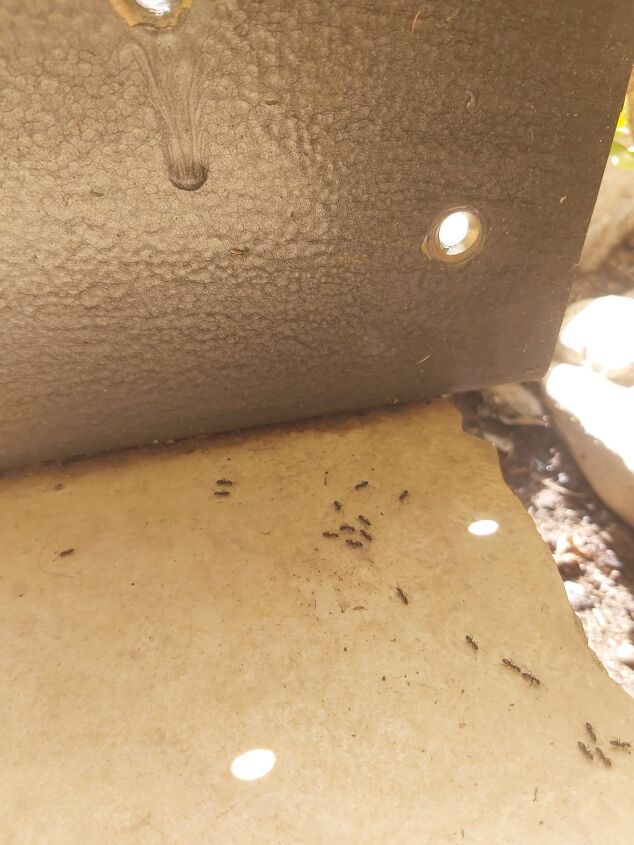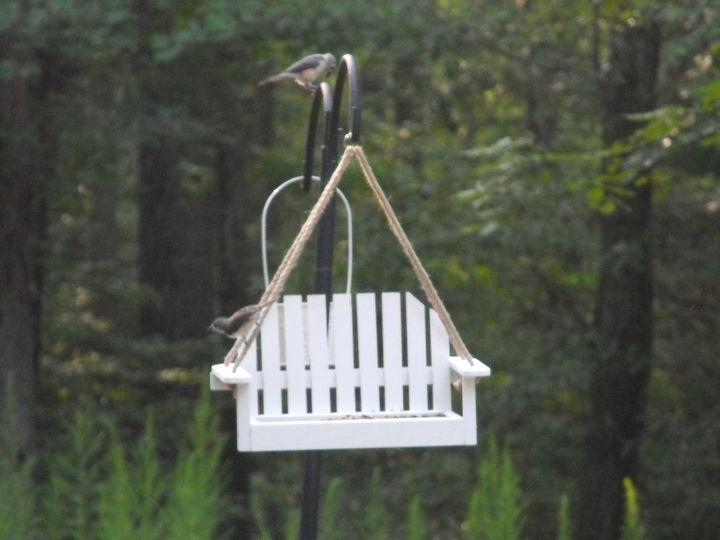Honey bee problems already

-
This does not sound like honey bees to me but carpenter bees. Honey bees tend to take advantage of openings only...My dad was a bee keeper and I have never heard of them boring into concrete!?? OK, experts on bees, let us hear from you.
 Jeanette S
on May 02, 2013
Helpful Reply
Jeanette S
on May 02, 2013
Helpful Reply -
-
One photo appears to be a section above a window? The metal lentil is supposed to have holes in the cement to allow water to drip out from behind the brick. Bees are not drilling into your mortar. These holes must remain open. However if they are being used for an entrance for bees and bugs, a small cut off piece of clothesline rope can be pushed into the opening. It will act as a wick and allow the water that enters behind the brick a way for it to exit without allowing bugs in. What happens when you fill in the space between the brick and the metal lentil is over time the lentil will begin to rust. This will result in the rust causing the brick to raise up and crack on the corners. Remove the foam and any caulk that was placed in the space.
 Woodbridge Environmental Tiptophouse.com
on May 02, 2013
Helpful Reply
Woodbridge Environmental Tiptophouse.com
on May 02, 2013
Helpful Reply -
-
So after further inspection, I believe Jeanette was right on. I am dealing with Carpenter bees and not honey bees although I remember carpenter bees being much bigger than the ones I'm dealing with. However, I have now witnessed them chewing through my brick mortar as well as wood and although they are not the dime sized holes I'm accustom to seeing from Carpenter bees, the holes are big enough for them to fit through. A little too late here. I already applied the sprayfoam pest repellant and it's worked. They have not chewed there way out. However, after they spray the house down for bees and such, I will try to remove as much foam as possible. I only applied the foam to one hole, I'm not sure how I'll be able to remove it outside of using a drill with a large drill bit. While at first I literally saw and heard them chewing and entering holes in the brick mortar illustrated by the first photo after I applied cement caulking while they were in the holes, I happen to notice them later flying into the brick hole. I also found other bees chewing on the mortar that was just below another basement window.
 Jeff C
on May 03, 2013
Helpful Reply
Jeff C
on May 03, 2013
Helpful Reply -
-
Carpenter bees do not drill into cement. They only go into wood where they create galleries in which to lay their eggs. However they can be bumble bees. They are just a bit smaller then carpenter bees, but more aggressive. You can tell the difference as carpenter bees like most carpenters are bald on their head. Bumble bees have a fuzzy head. I have seen bumble bees quite often in foundation holes and beneath siding on many occasions.
 Woodbridge Environmental Tiptophouse.com
on May 03, 2013
Helpful Reply
Woodbridge Environmental Tiptophouse.com
on May 03, 2013
Helpful Reply -
-
This is the best picture I have of the bees I'm battling. I can say that the bees are not nearly as aggressive as yellow jackets. I've been filling up all the holes I find both in wood and mortar until they spray the house. The holes are about pencil eraser size. After looking on YouTube, I see there are mason bees but those are native to France.
 Jeff C
on May 03, 2013
Jeff C
on May 03, 2013
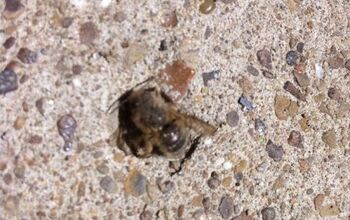 Helpful Reply
Helpful Reply -
Related Discussions
Creative uses for empty cat litter buckets, anyone?
Does anyone have any ideas of things to do with empty cat litter plastic buckets? I did take a foam square and covered the bucket and foam with fabric to make a quick... See more
How do you use washi tape?
Looking for ideas on how to use washi tape for DIY projects and crafts.Do you use it on notebooks, gift wrap, and journal pages?How about decor pieces and organizing ... See more
Is washi tape recyclable?
I'm moving to a new place and taking down my renter-friendly washi tape decor when I thought... wait, isn't this just paper? Can I chuck the washi paper in the recycl... See more
Can you write on washi tape?
I have some gorgeous translucent washi tape and I want to use it to label items. Has anybody written on washi tape before? If so, what type of pen/ink works best to s... See more
How effective are bay leaves for ants?
I'm dealing with a terrible ant infestation, and I heard that bay leaves can be a great way to keep them away. Do you know if that's true? If it is, how can I use bay... See more
Does anyone have any good suggestions on how to keep squirrels out of my bird feeders?
I have tried the crushed red pepper in the bird seed, and have tried putting vaseline on the pole that holds the feeders....any other suggestions? I will at times hav... See more
How to clean a mirror without streaks?
Every time I clean my mirrors, they end up having tons of streaks and almost look worse than before I started. What could I use to clean them that won't leave streaks... See more
